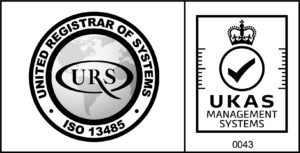
Corporate burnout is the wearing out from the pressure of unmanaging situations at work place. It is a psychological syndrome which emerges from prolonged stress; could also emerge from the interpersonal stressors at the workplace, leading to emotional exhaustion, termed as “great exhaustion” by Mc Kinsey and Co.
A survey by Gi Group found that about 42.5% of corporate population in India suffers from depression and anxiety disorders. According to the study, a significant proportion of stress at workplaces could be dealt with by being receptive, observant and non-judgmental in understanding other people’s perspectives.
Stress at workplace, corporate burn-out or any other mental health condition stemming out from the former two, manifest themselves in workplace absenteeism, presenteeism, and loss of productivity.
Confronted with the growing challenges of stress and related disorders creeping into the corporate crowd in India, it becomes all the more essential that employers deal with it at the organizational levels; also inculcating a practice of periodic assessment of the mental well-being of its human resources. Therefore, periodic and systematic monitoring of stress levels is crucial at an individual and community level, so as to prevent chronic depression and other physical ailments in the long run.
How can quantification of wellness data using non-invasive point-of-care testing help organizations?
Peri-ambulatory stress detection using non-invasive, point-of-care testing and quantifying wellness data on population groups can help organizations detect stress early and take proactive measures to manage it. Some of the benefits of this approach include the following,
Early detection: Non-invasive point-of-care testing can detect stress early, allowing organizations to intervene before it leads to burn-out and other mental health issues.
Personalized interventions: Quantifying wellness data can provide insights into individual stress levels and potential triggers, enabling organizations to develop personalized interventions to manage stress.
Improved productivity and performance: Organizations can improve employee productivity and performance by managing stress levels.
Enhanced employee engagement and retention: Organizations can improve employee engagement and retention by prioritizing employee wellness.
Measure, Monitor and identify chronic stress interfering with performance, productivity and long-term physical and mental health
Measuring, monitoring, and identifying chronic stress interfering with performance, productivity, and long-term physical and mental health is crucial for organizations to improve employee wellness and organizational performance. Chronic stress can significantly impact the mental and physical health of employees, as well as their overall performance and productivity at work. It can lead to various physical and psychological symptoms, including fatigue, headaches, sleep disorders, anxiety, and depression, which can interfere with an employee’s ability to perform their job effectively.
By measuring and monitoring stress levels, employers can identify employees at risk of burn-out and intervene early to prevent it. Organizations can manage employee stress and health by offering support such as counselling, stress management training, or flexible work arrangements.
Moreover, monitoring stress levels can help organizations understand the impact of their work culture and management practices on employee well-being. By identifying sources of stress within the workplace, employers can make targeted changes to improve the work environment and reduce stress levels for employees.
Organizations can improve employee productivity and performance by monitoring, measuring, and managing stress in the following ways:
Identifying High-Stress Areas: By monitoring stress levels, organizations can identify high- stress areas within the workplace and take targeted action to reduce stress. For example, if employees consistently report high-stress levels related to tight deadlines or workloads, the organization may consider redistributing workloads or providing additional resources to manage these stressors.
Providing Employee Support: Organizations can support employees experiencing stress by offering resources such as counselling, employee assistance programs, or stress management training. This support can help employees develop coping strategies and better manage their stress, improving productivity and performance.
Encouraging Work-Life Balance: Employers can encourage work-life balance by offering flexible work arrangements or setting clear expectations and boundaries around work.
Promoting a Positive Work Culture: A positive work culture that promotes open communication, recognition and rewards for employee contributions, and a sense of community and collaboration can help reduce stress levels and improve employee well-being, leading to improved productivity and performance.
Offering Wellness Programs: Wellness programs focusing on physical and mental health can help employees manage stress and improve their overall well-being. These programs may include exercise programs, mindfulness training, or nutrition education.
By creating a supportive work environment that promotes employee well-being and offers resources to manage stress, employers can reduce stress levels and improve overall job satisfaction and engagement, leading to better business outcomes.
Identify the pattern of stress profiles and enable insight into potential triggers for stress management
Organizations can identify patterns of stress profiles and enable insight into potential triggers for stress management by utilizing various tools and techniques.
Employee surveys can provide valuable insight into the sources of stress and patterns of stress levels across the workforce. These surveys can be designed to gather data on stress levels, the sources of stress, and the impact of stress on employee well-being, productivity, and engagement.
Data analytics tools can be used to analyze employee data, such as sick days, absenteeism, and turnover rates, to identify patterns of stress and potential triggers. For example, if a particular team or department has higher rates of absenteeism or turnover, this may indicate higher levels of stress.
Wearable technology, such as smartwatches or activity trackers, can be used to monitor employee health and wellness data, such as heart rate variability or sleep patterns. This data can provide insight into the impact of stress on employee well-being and productivity.
Health risk assessments can help identify potential sources of stress and provide insight into an employee’s overall health and wellness. These assessments may include questions related to stress levels, coping mechanisms, and overall well-being.
Focus groups and interviews can provide a deeper understanding of the sources of stress and potential triggers for stress within the organization. These sessions can be conducted with employees, managers, and other stakeholders to gain a comprehensive view of the organization’s culture and work environment.
Once the patterns of stress profiles and potential triggers have been identified, organizations can take targeted action to manage and reduce stress. These actions may include implementing stress management training programs, providing resources for mental health support, adjusting workload or work schedules, or other interventions to promote employee well-being and reduce stress levels. By identifying patterns of stress profiles and enabling insight into potential triggers, organizations can create a more supportive work environment that promotes employee well-being, engagement, and productivity.
CoHeal.ai is a smartphone enabled wellness platform enabling real-time measurement of vital health indicators. CoHeal.ai focuses on making wellness accessible, affordable and easy-to-use, using existing technology coupled with recent advancements and human expertise to provide a smartphone-based, AI-enabled, non-invasive, quantitative, point-of-care-testing platform.
